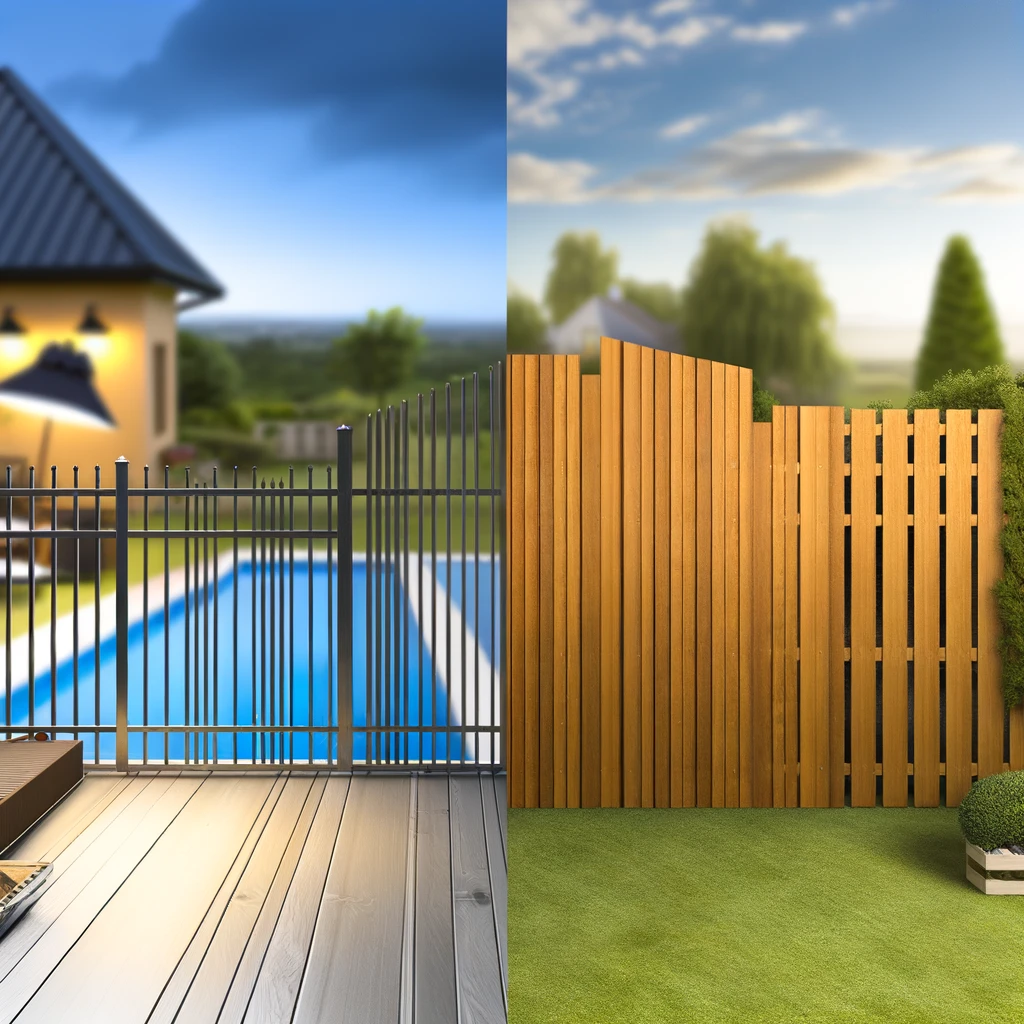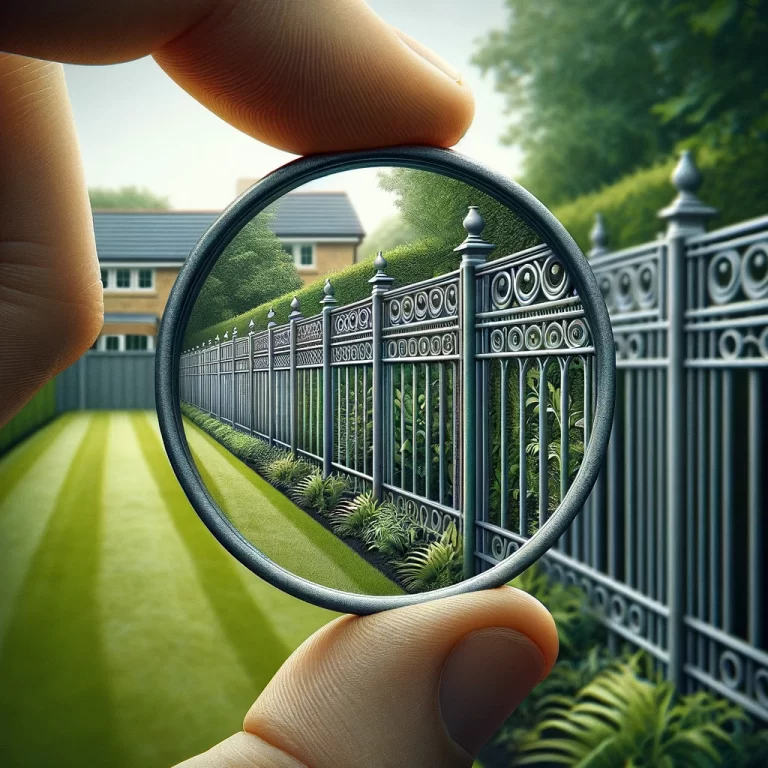Are you considering installing a metal fence on your property? One of the first questions that may come to mind is whether you need planning permission for this addition. In this article, we will explore what planning permission is, the factors to consider before installing a metal fence, the benefits of choosing a metal fence, the different types available, and how to obtain planning permission for your project. We will also discuss the consequences of installing a metal fence without the necessary approval.

What is Planning Permission?
In the UK, planning permission is the legal consent required from the local planning authority to carry out certain developments or changes to a property, ensuring that they meet specific regulations and guidelines set by the government.
Regarding obtaining planning permission for a project, there is a detailed process that individuals or entities must follow. This process typically involves submitting a planning application to the local council outlining the proposed development, including details like the height of a new fence or the extension of a building.
The council then reviews the application against various criteria, such as local laws and regulations, environmental impact, and community considerations. If the application meets all the necessary requirements, the council will grant the planning permission with specific conditions attached.
Do You Need Planning Permission for a Metal Fence?
When considering installing a metal fence in the UK, it’s essential to determine whether planning permission is required for such a structure, as regulations around property development and laws regarding fences must be adhered to.
Planning permission is necessary for metal fences, as it ensures compliance with local regulations and property laws. The installation of a fence can alter the external appearance of the property, potentially affecting the overall aesthetics and property value.
Property boundaries and neighbouring rights are crucial considerations when erecting a metal fence, as improper installation can lead to disputes with neighbours over property lines. Local councils have specific regulations governing the height, material, and location of fences to maintain aesthetic harmony within neighbourhoods.
Factors to Consider Before Installing a Metal Fence
Before proceeding with the installation of a metal fence, several crucial factors should be considered, including the type of metal, design, property boundaries, and adherence to local regulations.
When choosing the type of metal for your fence, it’s essential to consider factors like durability, maintenance requirements, and the overall aesthetic appeal. Metal fences come in various materials such as aluminium, steel, iron, and wrought iron, each with its unique characteristics and price points.
Design is another significant aspect to think about when installing a metal fence. The design should complement your property’s style and provide the desired level of security and privacy.
Property boundaries play a crucial role in determining the layout and placement of your metal fence. It’s essential to accurately identify property lines and obtain any necessary permits before installation to avoid legal disputes with neighbours.
Local regulations and zoning laws must be carefully reviewed before installing a metal fence. Compliance with these regulations ensures that your fence meets safety standards and does not violate any community guidelines or restrictions.
What Are the Benefits of a Metal Fence?
Metal fences offer a range of benefits, including enhanced security, exceptional durability, and the flexibility to customise designs to complement the property’s aesthetics.
One of the key advantages of metal fences is their superior security features. The sturdy construction of metal fences acts as a deterrent to intruders, providing peace of mind for homeowners and property owners alike. The durability of metal fences ensures that they can withstand harsh weather conditions, maintaining their structural integrity for years to come.
Another benefit is the wide range of design options available with metal fences. From sleek modern designs to ornate traditional styles, there is a metal fence to suit every taste and property type. This flexibility allows property owners to enhance the kerb appeal of their property while still achieving the necessary security measures.
Durability and Longevity
One of the key advantages of metal fences is their outstanding durability and longevity, attributed to the robust materials used in their construction.
The materials typically used in metal fences, such as aluminium, steel, or wrought iron, are known for their strength and resistance to harsh weather conditions, corrosion, and wear. These qualities ensure that a well-maintained metal fence can last for decades without significant deterioration, providing excellent security and aesthetics for your property.
Maintaining a metal fence is relatively straightforward, usually requiring periodic inspections, cleaning, and touch-ups for any signs of rust or damage. A simple coat of paint or protective finish can significantly extend the lifespan of the fence, keeping it looking pristine and functional for years to come.
Security and Privacy
Metal fences provide heightened security and privacy for properties, aligning with regulations such as the Occupiers’ Liability Act to ensure safety and protection.
These sturdy barriers not only create a physical deterrent against intruders but also offer a sense of seclusion for occupants. By establishing clear boundaries, metal fences help property owners adhere to legal responsibilities outlined in the Occupiers’ Liability Act, safeguarding against potential accidents or unauthorised access. The durability and low maintenance of metal fences further contribute to long-term security solutions, minimising the risks of breaches and ensuring peace of mind for residents.
Customisation Options
Metal fences offer versatile customisation options, allowing property owners to tailor the design and aesthetics according to their preferences, including the installation of decorative fences for added visual appeal.
Regarding customising a metal fence, the possibilities are virtually endless. Property owners can choose from various styles, such as ornamental iron, aluminium, or steel fences, each offering its unique charm. The inclusion of decorative elements like finials, scrolls, or lattice panels can elevate the fence’s overall look.
Furthermore, personalised options such as custom colours, heights, and patterns enable individuals to create a fence that not only enhances security but also reflects their personal taste and style.

What Are the Different Types of Metal Fences?
Metal fences come in various types, with popular options including wrought iron fences, aluminium fences, and steel fences, each offering unique characteristics and benefits.
Let’s delve into the distinctions among these three types of metal fences.
- Wrought iron fences are renowned for their timeless elegance and durability. They often feature intricate designs, making them ideal for enhancing the aesthetic appeal of a property.
- On the other hand, aluminium fences are favoured for their lightweight nature, making them easy to install and resistant to corrosion.
Steel fences, known for their strength and security, are a popular choice for commercial and industrial properties. Their robust construction makes them excellent for providing privacy and protection. With options ranging from ornamental to utilitarian, steel fences offer a versatile solution for different needs.
Wrought Iron Fences
Wrought iron fences are renowned for their classic and ornate designs, making them a popular choice for homeowners looking to add elegance and charm to their properties.
One of the distinguishing features of wrought iron fences is their intricate scrollwork and decorative finials that elevate the overall aesthetic appeal of any property. The design versatility of these fences allows for customisation to suit various architectural styles, from traditional to modern. The durability of wrought iron ensures longevity, providing both security and a timeless look. The visual impact of these fences is further enhanced by the interplay of light and shadow, creating a captivating effect that enhances the curb appeal of any property.
Aluminum Fences
Aluminium fences are known for their lightweight nature combined with exceptional durability, offering a practical and long-lasting fencing solution for residential and commercial properties.
Lightweight yet sturdy, aluminium fences are easy to install due to their manageable weight, making them a favorite choice for DIY enthusiasts seeking an elegant and robust barrier for their premises. The durability of these fences is underscored by their rust-free qualities, making them a low-maintenance option that withstands the elements with ease.
Steel Fences
Steel fences are favoured for their robust security attributes and the use of high-quality materials, ensuring strength and protection for properties requiring enhanced safety measures.
One of the key features of steel fences is their exceptional durability, making them resistant to weather elements and intruders alike. Their solid construction and sturdy design act as a formidable barrier, deterring potential trespassers and enhancing the overall security of a property.
Security is further heightened through various customisation options like adding spikes or security cameras, providing additional layers of protection. The quality of the materials used in steel fences, such as galvanised steel, ensures longevity and minimal maintenance requirements, offering a cost-effective security solution in the long run.
How to Obtain Planning Permission for a Metal Fence?
Securing planning permission for a metal fence involves consulting with the local planning authority, submitting a detailed planning application, and potentially seeking professional guidance from a planning consultant.
Before submitting your application, it is crucial to thoroughly research the specific guidelines set by the local planning authority regarding metal fences. Understanding the constraints and regulations can streamline the process and increase the chances of approval. Once you have gathered all the necessary documents and information, prepare a comprehensive planning application that includes detailed drawings, dimensions, and materials of the proposed fence.
After submitting the application, the local planning authority will review it against various criteria, such as visual impact, boundary limitations, and compliance with zoning regulations. This review process may involve consultations with neighbouring property owners or public notices to gather feedback.
If you encounter challenges during the application process or wish to enhance your chances of approval, engaging a planning consultant with expertise in metal structures can be beneficial. These professionals can provide valuable insights, navigate complex planning requirements, and represent your interests effectively before the authorities.
Consult with Local Authorities
Before installing a metal fence, it is vital to consult with the local planning authorities to ensure compliance with regulations and to obtain the necessary approvals from the government agencies overseeing property developments.
Engaging with local planning authorities is not only a legal requirement but also a strategic move to ensure that your metal fence installation project meets all necessary standards. Local regulations play a crucial role in determining the height, material, and design of fences, which ultimately contribute to the overall aesthetics and safety of the neighbourhood. By working closely with these authorities, you can navigate the approval processes smoothly and ensure that your project aligns with the broader development plans outlined by the government.
Submit a Planning Application
Submitting a comprehensive planning application for a metal fence involves detailing the proposed structure, property boundaries, and ensuring alignment with relevant regulations to facilitate the approval process.
Structural details play a crucial role in the success of a planning application for a metal fence. This typically includes specifications on the height, materials, and design of the fence.
Property considerations are equally important, as the application should clearly outline the exact location of the fence within the property boundaries to avoid any disputes or encroachments.
Adherence to regulations is non-negotiable. This involves ensuring compliance with local building codes, zoning laws, and any other relevant legislation governing the installation of fences. Proper documentation and surveys may be required to support the application and demonstrate that the project meets all necessary legal requirements.
Consider Hiring a Professional
Engaging the services of a planning consultant can streamline the process of obtaining planning permission for a metal fence, ensuring compliance with property laws and regulations while navigating the approval procedures efficiently.
When you work with a planning consultant, you benefit from their in-depth knowledge of property laws, which is crucial when dealing with the complexities of obtaining planning permission for structures like metal fences. These experts are well-versed in the law and can guide you through the various regulatory requirements that must be met. Their proficiency in understanding and interpreting the intricate legal frameworks surrounding property development is invaluable.
Moreover, planning consultants are adept at handling the approval procedures swiftly and effectively, saving you time and effort. They know the ins and outs of the process and can help you navigate potential hurdles with ease, ensuring a smoother path to obtaining the necessary permissions for your metal fence project.
What Happens If You Install a Metal Fence Without Planning Permission?
Installing a metal fence without obtaining the necessary planning permission can lead to legal consequences, as it violates property development laws and regulations set forth by the government authorities.
When property owners undertake such installations without the required permissions, they not only risk facing fines but also potential legal actions from local authorities. In many regions, the law is specific regarding the installation of structures like fences, ensuring they comply with zoning regulations and property boundaries.
Such unauthorised actions can result in regulatory infringements, impacting the neighbourhood aesthetics, safety, and property values. The government closely monitors such violations and may enforce corrective measures, such as ordering removal of the fence or imposing penalties on the property owner.







